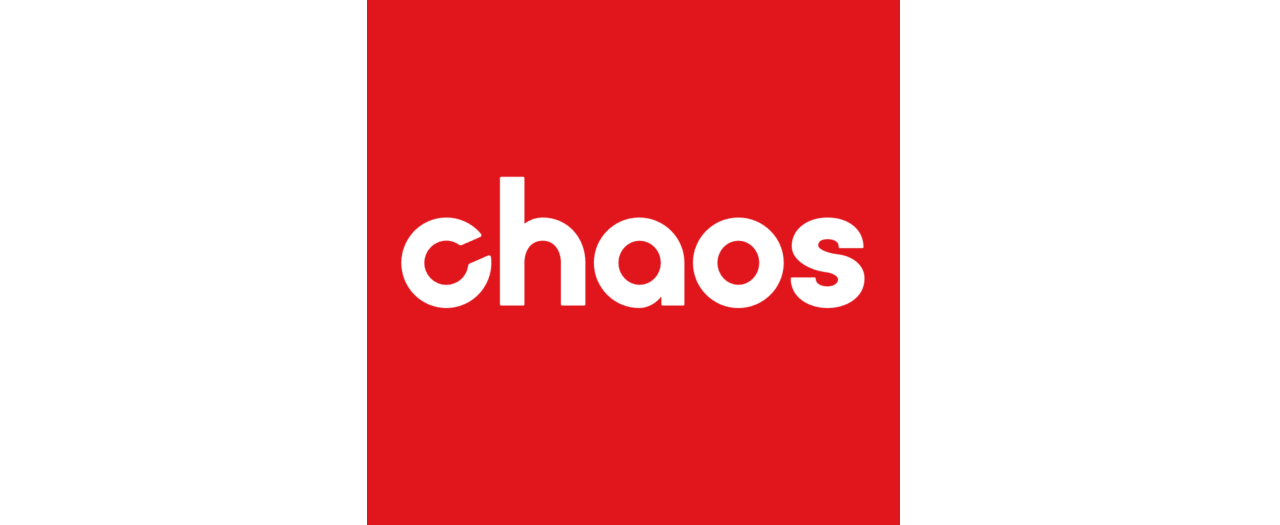Call for Papers
To submit, please access: https://srmv2.eg.org/COMFy/Conference/SR_2024
The Eurographics Symposium on Rendering 2024 will take place from Wednesday, July 3 through Friday, July 5, at Imperial College, London, United Kingdom. This 35th event continues the series of highly successful Eurographics Symposia and Workshops on Rendering.
This year, EGSR features two paper submission tracks: the Research Track and the Industry/Positions Track.
Research Track
All accepted research papers will be presented at EGSR 2024 and archived in the Eurographics digital library. Furthermore, a selection of them will be published in an issue of the Computer Graphics Forum (CGF) journal, based on both the recommendations of the reviewers and the outcome of a second cycle of review.
We are looking for work that shapes the future of image synthesis in computer graphics and related fields, such as human perception, mixed and augmented reality, deep learning, and computational photography.
There is no fixed minimum or maximum paper length. However, length must be proportional to contribution, and submissions over 12 pages in length will be treated as exceptional cases.
For each submitted paper, a minimum of three reviews will be provided to the authors, who will then be able to provide a rebuttal to clarify misunderstandings and answer the reviewers’ questions. The reviewers will then discuss and decide on the acceptance of the paper to the EGSR 2024 program. In the event of acceptance, the authors will submit a revised version of their manuscript prior to the conference. At least one author is expected to register and present their work in person.
Important dates (All times are midnight, 23:59 UTC)
- Abstract deadline: Tuesday, April 9
- Papers deadline: Monday, April 15
- Reviews released to authors: Wednesday, May 15
- Rebuttals due: Tuesday, May 21 (changed from Monday, May 20)
- Author notification: Friday, May 31
- Final papers due: Thursday, June 13
- Final notification (CGF): Monday, June 17
- Conference: Wednesday, July 3 through Friday, July 5
Topics of interest
We invite original contributions that advance the state-of-the-art in topics related, but not limited, to:
- Physically based rendering and global illumination
- Monte Carlo sampling, reconstruction, and integration
- Real-time rendering, including ray tracing, acceleration structures, and GPU algorithms
- Rendering software systems
- Specialized rendering hardware systems
- Inverse and differentiable rendering
- Image processing for rendering and compositing, such as denoising, matting, deblurring, colorization
- Image manipulation, such as warping, inpainting, relighting
- Machine learning for rendering, rendering for machine learning
- Deep generative models of image synthesis
- NeRF or 3D Gaussian splat representations for rendering
- Material and scattering models
- Acquisition, modeling, and fabrication of geometry, appearance, and illumination
- Color science, spectral modeling and rendering
- Face and human capture and rendering
- Computational photography, optics, and displays
- Image-based rendering (IBR), lightfields
- Expressive/Non-Photorealistic rendering (NPR)
- Vector graphics and other non-pixel-based rendering formats
- Procedural modeling, texturing, and simulation
- Augmented/virtual/mixed reality, including rendering, input, and output technologies
- Human perception on rendering
- Scientific visualization, e.g. large-scale data visualization and volume rendering
- Audio/sound rendering
How to Submit Your Work
Please submit your work using the SRM online submission system (submit here). The submission should use the EGSR 2024 LaTeX template available on SRM (first create an account on the SRM system to download the template).
Industry/Position Papers Track
The Eurographics Symposium on Rendering (EGSR) 2024 includes an Industry/Positions Papers Track that includes invited papers from our colleagues in industry that are on topics of interest to the general rendering community. One goal of this track is to provide an accessible venue for getting out ideas that have found practical use in industry and could impact the future of rendering research, but might not meet the standards/expectations of scientific evaluation expected in formal research papers. These papers will be curated by the paper co-chairs and will be presented in the conference along with the traditional research papers. We are looking for papers that present ideas and applications of rendering (both high-end and real-time), as well as other aspects of image synthesis (e.g., image-based rendering, rendering for AR/VR, machine learning for rendering, etc.). Topics for possible Industry/Position papers could include, but are not limited to:
- Position papers that provide a different perspective, broader view, or scholarly synthesis of a field of research
- Position papers that pose interesting problems found in industry rendering applications that should be more emphasized in academic research
- Novel rendering ideas that are interesting and already successfully used in practice but might not be developed to the point of a formal research paper
- Extensions or twists on existing rendering algorithms that have been found to produce better results in practice
- A description of a state-of-the-art rendering pipeline or software/hardware system
- A new dataset that would facilitate research in rendering
Papers accepted in this track will be published in the Eurographics Digital Library for archival purposes and presented at EGSR 2024. At least one author is expected to register and present their work in person. Industry track paper submissions can be directly sent to the program chairs via email to chairs-egsr2024@eg.org.
Important dates (All times are midnight, 23:59 UTC)
- Industry Track papers deadline: Wednesday, May 29
- Author notification: Thursday, June 6
- Final papers due: Wednesday, June 26
Submission Policy
Plagiarism
A submission to EGSR should describe an original work of the authors. Authors must not use ideas or content originating from others without properly crediting their original sources. Note that such sources are not limited to peer-reviewed publications, but also include patents, textbooks, technical reports, theses, unpublished work posted on arXiv, as well as other posts on the World Wide Web. Failure to comply with this requirement will be considered plagiarism and result in rejection. See “Anonymity” below for instructions about unpublished work by the same authors.
Prior Art
Authors are expected to cite, discuss differences and novelty, and compare results, if applicable, with respect to relevant existing publications, provided they have been published in a peer-reviewed venue before the EGSR submission deadline. This also applies to patents, which also undergo a professional reviewing process. But what about technical reports, and other non-peer-reviewed publications, such as technical reports or papers posted on arXiv, which we henceforth refer to as prepublications? With the rapid progress of search engines and the increased perusal of arXiv papers by the scientific community, asking authors to thoroughly compare their work to these prepublications imposes an unreasonable burden: a seemingly relevant report that is incomplete in its disclosure or validation might appear online shortly before the deadline. While peer-reviewed publications are certainly not immune to these shortcomings, they have, at least, been judged sufficiently complete and valid by a group of peers. Consequently, authors are not required to discuss and compare their work with recent prepublications (arXiv, technical reports, theses, etc.), although they must properly cite those that inspired them (see “Plagiarism” above). We nevertheless encourage authors to mention all related works they are aware of, as good academic practice dictates. Note that with new works posted on arXiv on a daily basis, it is increasingly likely that reviewers might point out similarities between the submitted work and online reports that have been missed by the authors. In this case, authors of conditionally accepted papers should be prepared to cite these prepublications in their final revision as concurrent work, without the burden of having to detail how their work compares to or differs from these prepublications.
Anonymity
The EGSR review process is fully double-blind: the reviewers do not know the identity of the authors, and the authors do not know the identity of the reviewers. This anonymity is an integral part of an objective and fair review process, so authors are required to take all reasonable measures to preserve their anonymity. Below, we discuss specific situations in which authors may have to mention their own publications and how to handle such disclosures in the context of an EGSR submission.
Before Submission
When citing already published work by the same (or an overlapping) group of authors, the citation should refer to that work in the third person, just as it would refer to any other previously published work by a completely different set of authors. For other relevant work from the same author(s) as the submission, we distinguish between two cases: (A) works that have been submitted for publication elsewhere, but have some relevance to and/or overlap with the submission; and (B) largely overlapping prepublications that are available online at the time of submission (arXiv, technical report, thesis, etc.). For case (A), the other work should be cited anonymously, as well as provided as anonymous supplementary material. The authors must convince the reviewers that the current submission is sufficiently different from the other work, which can be done using an anonymous cover letter that outlines the differences. For case (B), namely earlier or largely similar versions of the submission that are publicly available (on arXiv, as a technical report, etc.) are NOT to be cited in the submission, as this would identify the authors. Instead, these prepublications must be listed in the submission form, upload field “Preprint.” This field is not visible to reviewers.
After Submission
Blatant violations of anonymity are not acceptable. However, we also recognize that prepublications and talks have become part of the scientific discourse, and EGSR allows these means of communication. Specifically, before the final acceptance decision is made: Authors must not discuss the research described in submitted EGSR papers with the media. Media includes editors/journalists/writers/interviewers of newspapers, radio, television, magazines, as well as public relations and media arms of companies, universities, and other research institutions. After submitting to EGSR, authors may archive the submission without mentioning EGSR as an institutional tech report or on arXiv or a similar service. Authors must not make any posts to social media or elsewhere that can be linked to a specific EGSR submission (e.g., mentioning the title of the submission, or details and content, and saying that it is an EGSR submission). Authors may talk about their work in a presentation without saying it is submitted to EGSR. Authors may mention their submission(s) as under review at EGSR as part of the written materials submitted for job and funding applications. Authors may talk about the research involved in their submission in talks given for these purposes as well, without mentioning EGSR.
Program chairs
- Elena Garces, Universidad Rey Juan Carlos (Madrid, Spain)
- Eric Haines, NVIDIA
Conference chairs
- Abhijeet Ghosh, Imperial College London
- Tobias Ritschel, University College London









